Introduction
Storage conduit Serial ATA (SATA) has been available in the revision 3.0 format for Intel and AMD motherboards for a while now. Also referred to as SATA 6Gbps or 600MB/s the ubiquitous standard doubles the potential throughput compared to older SATA 2.0.
The limitations of the real-word transfer ceiling for SATA has been up for debate as the latest solid-state drive (SSD) controllers routinely surpass the interface's potential. Newer initiatives such as SATA Express, based on the NVMe protocol, have overcome the speed limitation, but at the time of writing, are few are far between.
Obtaining faster-than-SATA speeds on consumer motherboards is possible by jumping straight on to the back of the PCIe backbone connecting CPUs to a motherboards's peripherals. For example, PCIe 3.0, common on today's boards, offers approximately 1GB/s bandwidth per lane and in each direction, meaning a full x16 slot can push close to 16GB/s in both directions. PCIe, then, is effective in lifting the bandwidth lid imposed by SATA.
PCIe-based SSDs usually take advantage of this bandwidth freedom by mating multiple controllers to fast NAND memory. Usually presented with a PCIe x8 interface and able to sustain well over 1GB/s, these PCIe SSDs are at the very cutting edge of consumer performance.
Better known for its range of DDR3 and DDR4 memory, Taiwanese outfit G.Skill is extending its enthusiast roots into super-fast SSDs. Announced last month and now shipping via selected retailers, the G.Skill Phoenix Blade 480GB is positioned as one of the fastest SSDs around. It just so happens we have it in for review.
As mentioned earlier, building a rapid SSD requires using established NAND controllers that are proven to work together. These take the form of four LSI SF-2281 SSD controllers in a RAID0 setup, configured this way for performance reasons. The RAIDed setup drives a nominal 512GB of Toshiba MLC NAND memory.
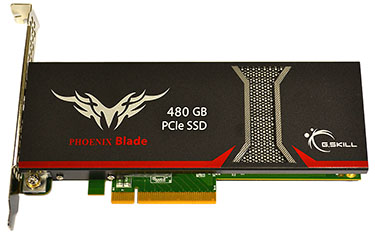 |
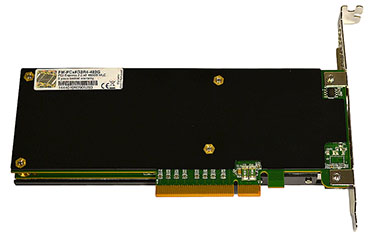 |
The half-height Phoenix Blade measures 17cm long, 7cm high and takes up a single slot on the motherboard. A x8 interface sits inside a spare x16 on said board, but G.Skill limits the transfer potential to PCIe 2.0, meaning up to 8GB/s of bandwidth in each direction. Limiting needs to be understood in context, mind, as the available bandwidth is many times higher than what even four LSI controllers can accomplish in a best-case scenario.
G.Skill quotes top-end speed of 2,000MB/s read and write, based on a preferred Iometer pattern, and thus substantiates a claim that the Phoenix Blade is up to 4x faster than a SATA-based SSD. Looking at the other extreme, random performance, G.Skill says it can deliver 245K writes and 90K reads on 4K files, putting the drive comfortably ahead of most SATA models. Build quality is good, as the SSD is enclosed inside a a custom aluminium heatisnk that never becomes too warm to the touch.
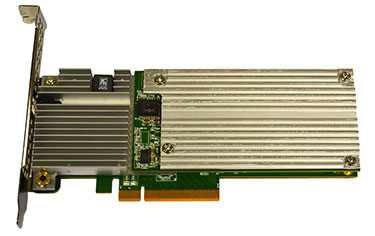 |
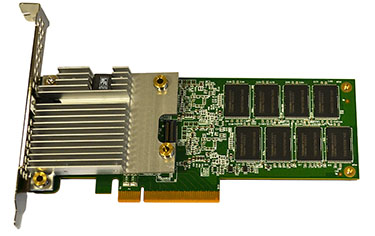 |
G.Skill quotes a maximum power consumption of 18W when writing and 15W when reading, necessitating a secondary heatsink on the NAND chips and controllers underneath. Each of the four SandForce SF-2281 controllers interface with eight 128Gbit Toshiba 19nm NAND, offering a potential 128GB per controller. G.Skill uses overprovisioning to curb the overall capacity from 512GB to 480GB.
The four controllers, set to RAID0, are connected to the PCIe interface via a separate chip, an SBC 208-2, which is able to pass TRIM and SMART commands over to the system. It's this SBC processor that handles the RAID calculations and SATA-to-PCIe transfers. Bridging over in this way means G.Skill doesn't use the latest standardised NVMe specification, thus requiring particular Phoenix Blade drivers for the operating system.
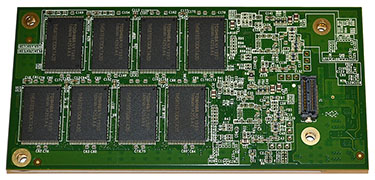 |
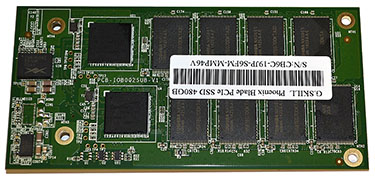 |
A two-sided board houses two controllers and 256GB of NAND. Installation is a simple matter of installing into a spare x16 PCIe slot, loading up Windows 7/8.x and downloading relevant drivers. No other operating systems are supported at this time, but the drive can be used as a boot disc once pre-OS drivers are installed.
Backed by a three-year warranty, the 480GB model, priced at £530, is the sole Phoenix Blade representative. It's aimed at people who need blazing-fast transfers made possible by removing the headroom shackles imposed by SATA.









